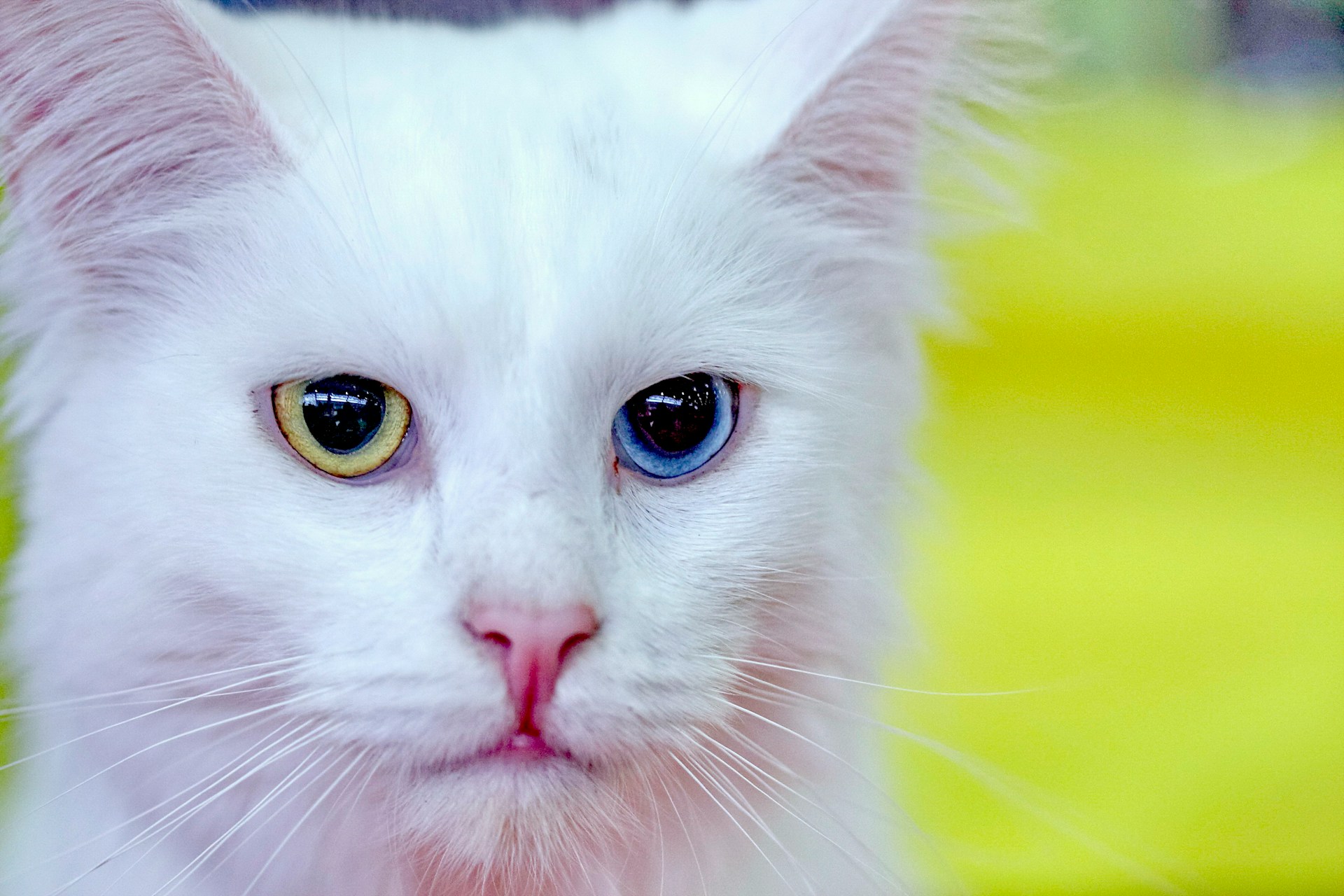Sporting slender, danseuse-like bodies, and a plushy, lustrous fur, the Turkish Angora cat is a prized feline in its homeland. It is highly-adaptable but has a needy side that will be happiest in homes that can shower it with tons of love and attention. And, beyond its exquisite appearance, this furball is playful and has a high energy level, often getting into mischievous things when baffled. Nevertheless, it is a genial cat that can live harmoniously with other toddlers and other pets, but it will let them know who is in charge.
Origin of the Turkish Angora Cat
The Turkish Angora cat traces its roots from the Ankara city in Turkey, previously called Angora. Thus, their name. It is a natural long-haired breed, with soft and stunning fur, that served as a living memento for the country’s visitors and invaders.
In fact, it is believed the breed is the first longhair cat to reach Europe. A white longhair cat was brought from Ankara to Europe in 1520. But, while the breed was majestic, it was soon toppled by the Persian cat in the European cat fanciers’ eyes.
The Turkish Angora was shunned, brought to the brink of extinction, was only saved through a breeding program initiated by the Ankara Zoo. If it wasn’t for their efforts, the world might have never seen the breed again.
It was only in 1954 when the breed first reached the United States after a couple visited Ankara Zoo and asked permission to take two of them. The Turkish Angora was actively bred since then and was granted full recognition in 1972. Today, the feline breed is accepted by most cat registries.
Physical Characteristics of the Turkish Angora Cat
Length: 12 and 18 inches
Weight: 7 to 10 pounds (Males), 5 to 8 pounds (Females)
Life Expectancy: 12 to 18 years
Coat Color: White, blue, black, red, and cream, with different shadings and patterns
Type of Coat: Mid-long and lustrous
Eye Color: Emerald, light blue, emerald, sapphire, green-gold, copper, amber, odd-eyed
Turkish Angora cats are fairish-sized felines, with a long, sleek, muscular body and fine boning structure. They always appear attentive, enthusiastic, and confident. Their eyes are a bit slanted while their ears stand all. Meanwhile, their coat is mid-long and has no undercoat. While the white Turkish Angora cats are the most popular, the breed comes in various colors.
Turkish Angora Cat Personality
Their elegant and beautiful appearance can be misleading as Turkish Angoras cats are blessed with athleticism. They can reach any high points in the house, open cabinets and drawers, and survey any nook using their probing paws. These felines are also playful and carry their friskiness into old age. Seeing them gracefully chase feathers, and pounce balls and scraps of papers.
While active, they also have their friendly, affectionate, and sociable side. They will be happy to partake in whatever their owners are doing or engage them in lengthy discussions. At the end of the day, they would curl on their laps, drape on their shoulders, or rest behind them on the bed.
These furballs are determined, though. Adding their cleverness, it can be a rogue combination. Once they have something in mind, there’s no turning back, and it may be difficult to change their stand. If they like to play, they will do whatever it takes to get their owners’ time and attention, even if it causes them to get into some mischief.
Thankfully, they are charming and loving cats. It might require some good patience to live with them, but their devotion to their family offsets all the challenges imposed by their wittiness, adamancy, and a big heart for play.
Caring for the Turkish Angora Cat
Turkish Angora cats’ lustrous coat requires little upkeep as it does not shed that much. However, they are mostly white, and bathing may be necessary every few months to keep them clean-looking. Their coat often reaches its full length at two years old.
The rest of the grooming needs are primary care, such nail trimming every 10 to 14 days, brushing their teeth weekly to prevent periodontal disease, and ear and eye cleaning to remove dirt build-up and detect any infection.
Given their love for play, it is best to provide them ample space to run freely and survey their surroundings. Cat trees and high perches are suitable investments to provide them with climbing opportunities to exhaust their energy. A good selection of toys will also help to keep both their mind and body stimulated.
Turkish Angora cats are relatively sturdy. However, most white cats born with one or two blue eyes are vulnerable to deafness on one or both ears. Moreover, these felines are also prone to developing health issues, such as hypertrophic cardiomyopathy, or hardening of the heart muscles, and ataxia, a neuromuscular disorder, characterized by shaking movements. Consulting the vet helps ease concerns, prevent any condition, and ensure these optimum health fur balls.
Turkish Angora cats are ideal for families that can shower them with lots of love, attention, and patience. Once they do, they are bound to have adamant, yet fun-loving and affectionate felines in their lovely homes.

